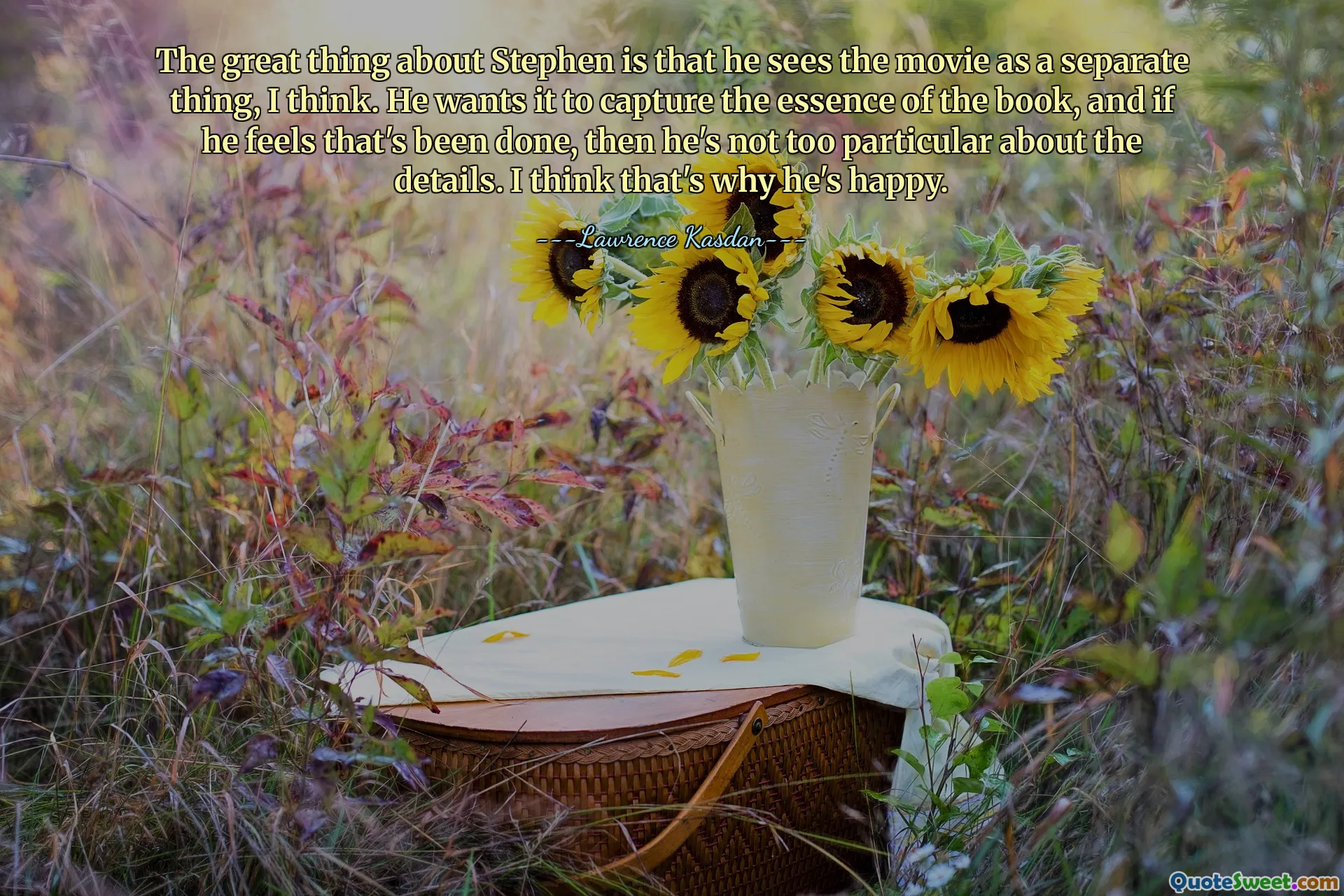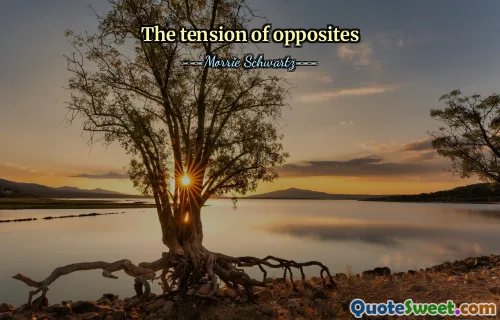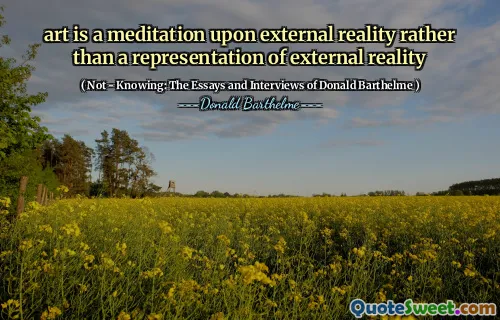
The great thing about Stephen is that he sees the movie as a separate thing, I think. He wants it to capture the essence of the book, and if he feels that's been done, then he's not too particular about the details. I think that's why he's happy.
This quote highlights an important perspective on adaptation and artistic interpretation. It acknowledges that when translating a story from one medium to another—such as from a book to a film—it's less about replicating every detail and more about capturing the core essence or thematic core of the original. Stephen’s approach, as described, suggests a flexible mindset that values the emotional, thematic, or narrative truth over rigid adherence to specific details. This can be seen as a healthy creative attitude, which encourages adaptation to new formats, audiences, and storytelling techniques without being bogged down by fidelity to the source material.
In many cases, strict faithfulness can hinder the artistic freedom necessary to create a compelling film that resonates with viewers. Often, the process of adaptation involves necessary changes in plot, character development, or setting to suit the visual medium and pacing. Stephen’s contentment with a successful capture of the essence indicates a pragmatic approach, understanding that the soul of a story can be preserved even if some details diverge. This philosophy fosters creativity and allows filmmakers to innovate while respecting the original work.
Furthermore, this perspective underscores the importance of intent and core message in storytelling. As adaptations are inevitably different experiences for different audiences, focusing on the heart of the story can lead to interpretations that are more universally impactful. Such an attitude can also reduce frustrations with criticisms about deviations, emphasizing instead the overall success in conveying the story’s spirit.
Ultimately, this quote serves as a reminder that art sometimes benefits from a certain degree of flexibility. When done correctly, capturing the essence may be enough to satisfy both creators and audiences, opening space for new interpretations and deeper engagement with the narrative.
---Lawrence Kasdan---









